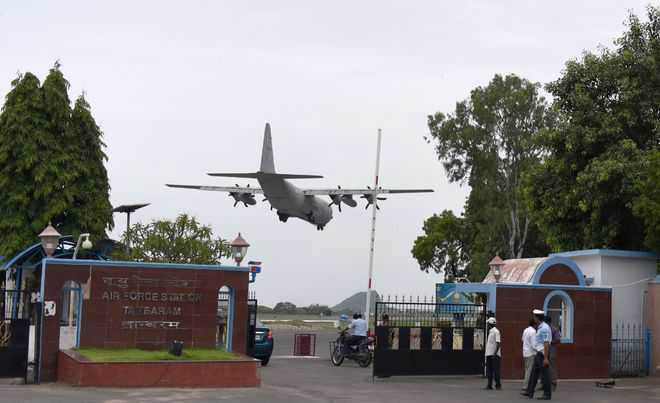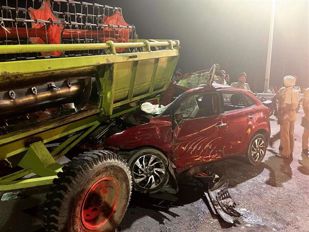
An IAF plane lands at the Tambaram Air Force station in Chennai on Saturday. AFP
Vijay Mohan
Tribune News Service
Chandigarh, July 23
The aircrew of the AN-32 transport aircraft that went missing over the Bay of Bengal on Friday had asked the Chennai air traffic control (ATC) for a course deviation a few minutes before it reportedly lost contact with the ATC, it is learnt.
IAF sources said around 9 am, the pilot had requested permission from the ATC to alter his course by 10 degrees to the right, ostensibly because of the prevailing weather conditions.
The weather in the search area today was bad, with overhead clouds, rough seas and visibility being 3-4 nautical miles.
The recently upgraded aircraft, which is reported to have suffered three snags this months, had left Tambaram airbase near Chennai at 8.30 am on Friday and was to land at Port Blair around 11.45 am. It fell off the radar at 9.12 am, 151 nautical miles (280 kms) east of Chennai.
Permission to change course, sources said, was accorded. The aircraft had been cleared to fly at an altitude of 23,000 feet, which it would have reached in about 15 minutes after take-off with full load.
“The possibilities here are that the aircraft flew into the eye of a storm or suffered a structural or electrical failure. Sabotage also cannot be discounted at this stage. These situations give little or no reaction time to transmit a distress signal,” an AN-32 pilot said.
In June 2015, a Coast Guard Dornier aircraft had gone missing off the Chennai coast. Its remains were located 33 days later. An inquiry could not establish the cause of the crash.
Under IAF’s standard operating procedure, the long sea stretch between Chennai and Port Blair requires AN-32s to fly with full fuel which is 5.5 tonnes. Five tonnes is pumped by tankers through under-wing access nodes, while the remaining is “poured” through an opening above the wing roots that requires a technician to climb on top of the aircraft and manually operate the fuel cap.
An AN-32 pilot recalled an incident many years ago where the fuel cap of an aircraft was not properly secured. Mid-way over the Bay of Bengal, the aircrew observed unusually high fuel consumption. Inspection after landing revealed that the unsecured fuel cap had blown off in the air. “The air friction over the wing is very high and volatile fumes from the aviation fuel could have produced a spark with disastrous consequences. It was a miraculous escape from the aircraft,” he added.



























